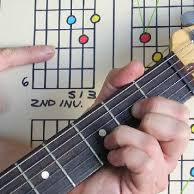What Is A Guitar Delay Pedal And How To Use It. 16/03/2023 - 1243 views

If you're a guitarist looking to add some new dimensions to your playing, a delay pedal is a great tool to consider. A delay pedal is a type of effects pedal that can replicate and manipulate the sound of a guitar's signal, creating an echo or repeating sound that can add depth and complexity to your music. In this blog, we'll explore what a guitar delay pedal is and how to use one.
What is a Guitar Delay Pedal?
A guitar delay pedal is a type of effects pedal that produces an echo or repeating sound. It works by capturing the original signal of your guitar, then repeating it back to you at a later time, creating a delayed effect. The delay time can be adjusted to create different rhythmic patterns, and the number of repeats can be manipulated to create a variety of sounds.
Delay pedals can come in many different shapes and sizes, with various features and settings. Some pedals offer a simple on/off switch, while others have multiple controls for adjusting the delay time, feedback, and tone of the repeated sound.
How to Use a Guitar Delay Pedal
Using a guitar delay pedal can take some experimentation to get the hang of, but once you've got the basics down, it's a great tool for enhancing your playing.
Connect Your Pedal: First, connect your guitar delay pedal to your guitar and amplifier. Most pedals will have input and output jacks for this purpose.
Adjust the Delay Time: Set the delay time to your desired setting. This will determine how long it takes for the repeated sound to be heard.
Adjust the Feedback: The feedback control adjusts how many times the signal is repeated. If set too high, the repeated sound can quickly become overwhelming and chaotic, so it's best to start with a lower setting and adjust as needed.
Adjust the Level: The level control adjusts the volume of the delayed signal. You can use this control to set the volume of the delayed signal relative to the original signal.
Experiment with Settings: Once you have the basic controls set, start experimenting with different settings to see what sounds you can create. Try adjusting the delay time to create different rhythmic patterns, or adjust the feedback to create a more sustained or looping sound.
Incorporate into Your Playing: Once you've found a setting you like, try incorporating the delay pedal into your playing. You can use it to create a more atmospheric sound, or to add depth and complexity to your solos.
Conclusion
A guitar delay pedal can be a great tool for enhancing your playing and adding new dimensions to your music. By adjusting the delay time, feedback, and level controls, you can create a variety of sounds that can take your playing to the next level. So why not give it a try and see what kind of sounds you can create with a guitar delay pedal?
More Articles »

